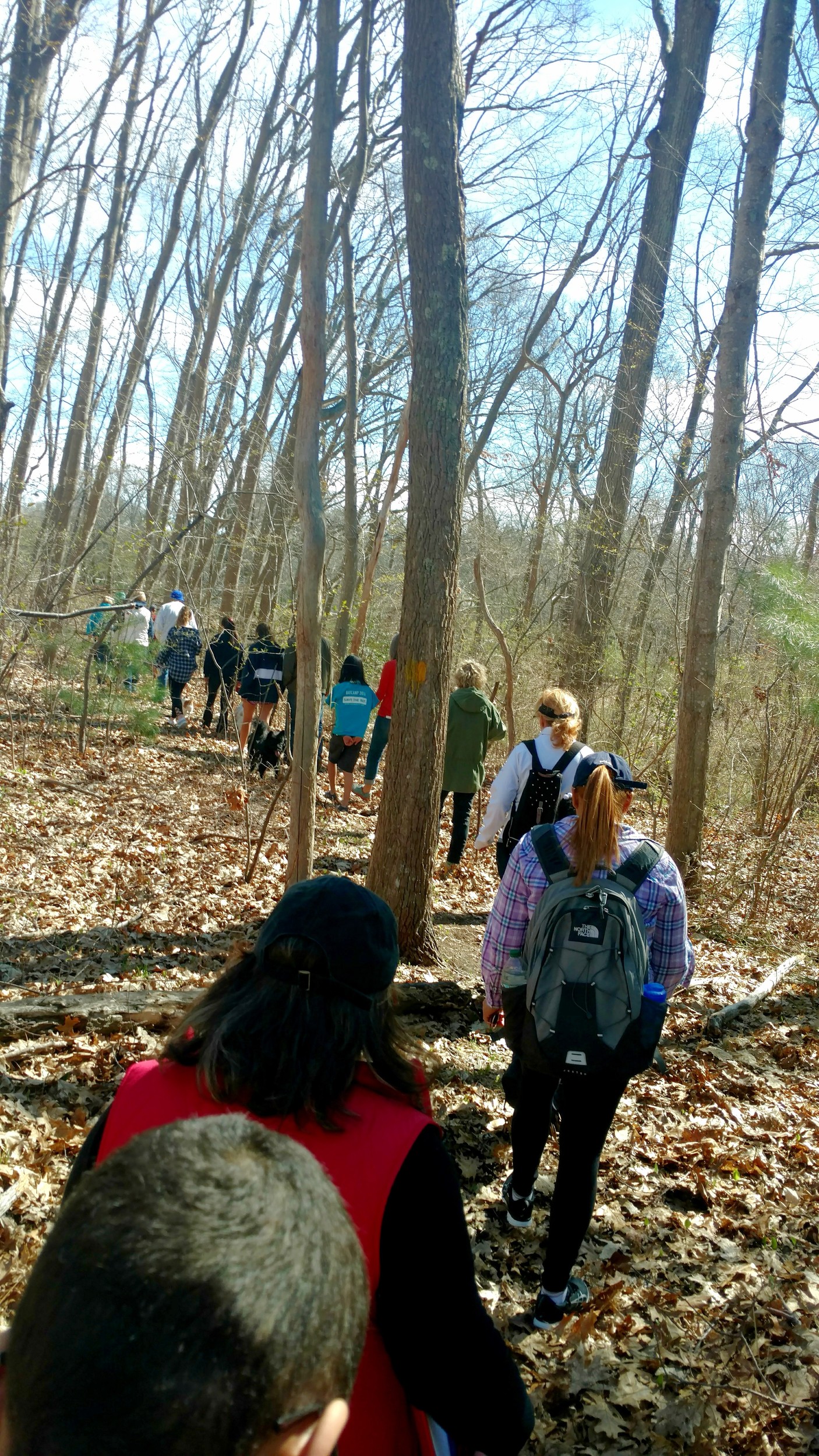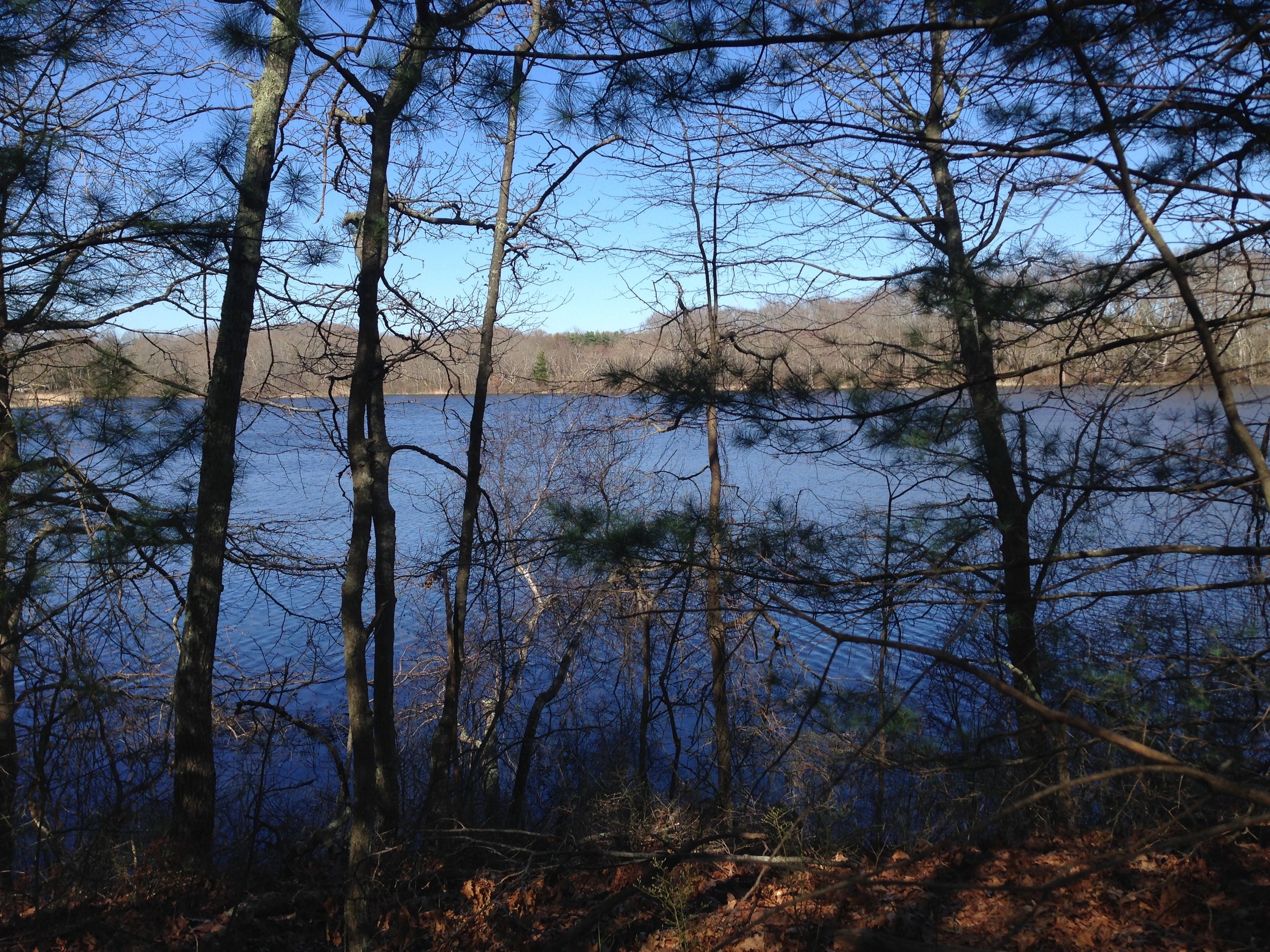In Barrington, there's a short hike that is long on history
Land trust leads Earth Day hike through Sowams Woods
A soaring osprey, a raccoon’s abandoned home, and some questionable funky fungus on a fallen tree branch were just a few of the goodies hikers noticed as they walked through Sowams Woods on …
This item is available in full to subscribers.
Please log in to continue |
Register to post eventsIf you'd like to post an event to our calendar, you can create a free account by clicking here. Note that free accounts do not have access to our subscriber-only content. |
Day pass subscribers
Are you a day pass subscriber who needs to log in? Click here to continue.
In Barrington, there's a short hike that is long on history
Land trust leads Earth Day hike through Sowams Woods
A soaring osprey, a raccoon’s abandoned home, and some questionable funky fungus on a fallen tree branch were just a few of the goodies hikers noticed as they walked through Sowams Woods on Sunday, April 23.
Led by the Barrington Land Conservation Trust’s Helen Tjader, the walk’s main attractions were the two vernal pools on the 10 acres of property nestled between Washington Road and Echo Lake.
However, vernal pools weren’t the only topic of conversation. Like most open spaces in New England, Sowams Woods has a vibrant history related to the native tribes who populated the area.
The headship tribe of the seven tribes of the Wampanoag Nation, the Pokanoket homeland of Sowams included all of Warren, Tiverton, Bristol, and of course, Barrington, in addition to portions of East Providence, Seekonk, Swansea and Rehoboth. Sowams Woods was named to bring awareness that Sowams is more than just a portion of Hampden Meadows.
From the Revolutionary War era up until the early 20th century, Sowams Woods was predominantly a walnut grove. Cut down to make way for a golf course in 1911, the chemicals left behind by the walnut trees discouraged the growth of other shrubs and trees in their place. Thus the woods remained a relatively open space, which in the early 1990s attracted a group of local amateur archaeologists to dig for historical relics.
Rhode Island Country Club, the property owner, granted permission to the archeologists and a more extensive dig commenced. In the first layer of undersoil they found artifacts of the Colonial and early contact period, including broken clay pipes, glass, knives, and buttons. Lower layers included arrowheads and other stone tools, some dating back about 5,000 years. This demonstrated continued and extensive use of the land.
As part of their dig, the archeologists made an important discovery: Underneath the soil were numerous crescent-shaped stone hearths. This was an exceptional and unique find across all of Southern New England.
Carbon dating indicated the hearths were in use 800 years ago, but it is likely they were also used before and after that time. These hearths were part of an area specifically set aside for women and childbirth, and as such was designated as a place for peace. Poppasquash in Bristol is a similarly situated and purposed Pokanoket land.
The discovery brought the attention of the State of Rhode Island Historical Preservation & Heritage Commission. They immediately demanded a halt to the digging. Due to the ceremonial nature of the find, especially the stone hearths, they designated Sowams Woods a site to be preserved. The hearths were covered and have and will remain undisturbed as part of the conservation of this land by the land trust and its protection partners.
In late 2006, with the help of the National Oceanic and Atmospheric Administration, the Rhode Island Department of Environmental Management, the Town of Barrington, the Pokanoket Tribe of the Wampanoag Nation, The Nature Conservancy and countless private donors, the Barrington Land Conservation Trust was able to purchase Sowams Woods from Rhode Island Country Club.
On April 30, 2010, the BLCT was honored by the Environmental Council of Rhode Island for permanently protecting and restoring Sowams Woods.
Fast-forward 10 years from the initial dedication ceremony on April 22, 2007. The recent walk through the woods highlighted not only the rich history of Sowams Woods, but it also brought citizens young and old, on two legs and four, to a lovely spot within the borders of Barrington. The vernal pools have filled with water and new life.
“The vernal pools are really cool,” said James Hogan-Shaw, a fourth-grader at Hampden Meadows School. “Because every year the forest gets to have new animals.”
While the sun sparkled on the pools and birds chirped in their nests, Sowams Woods was coming alive. In this protected forest, one can envision why the Pokanoket Tribe treasured this land.









